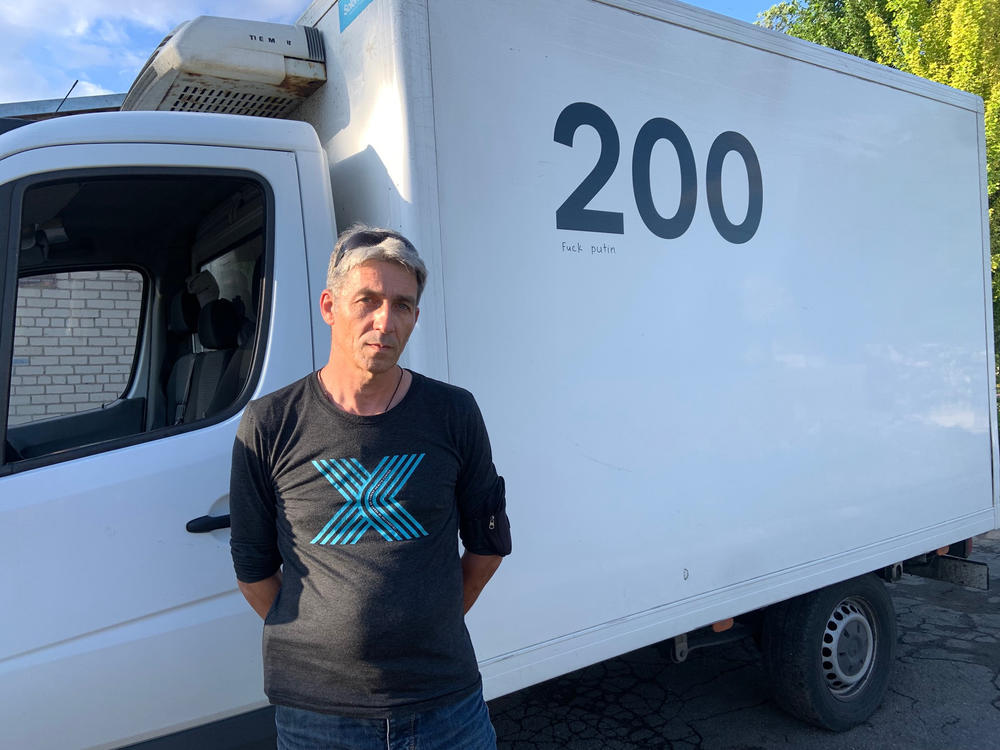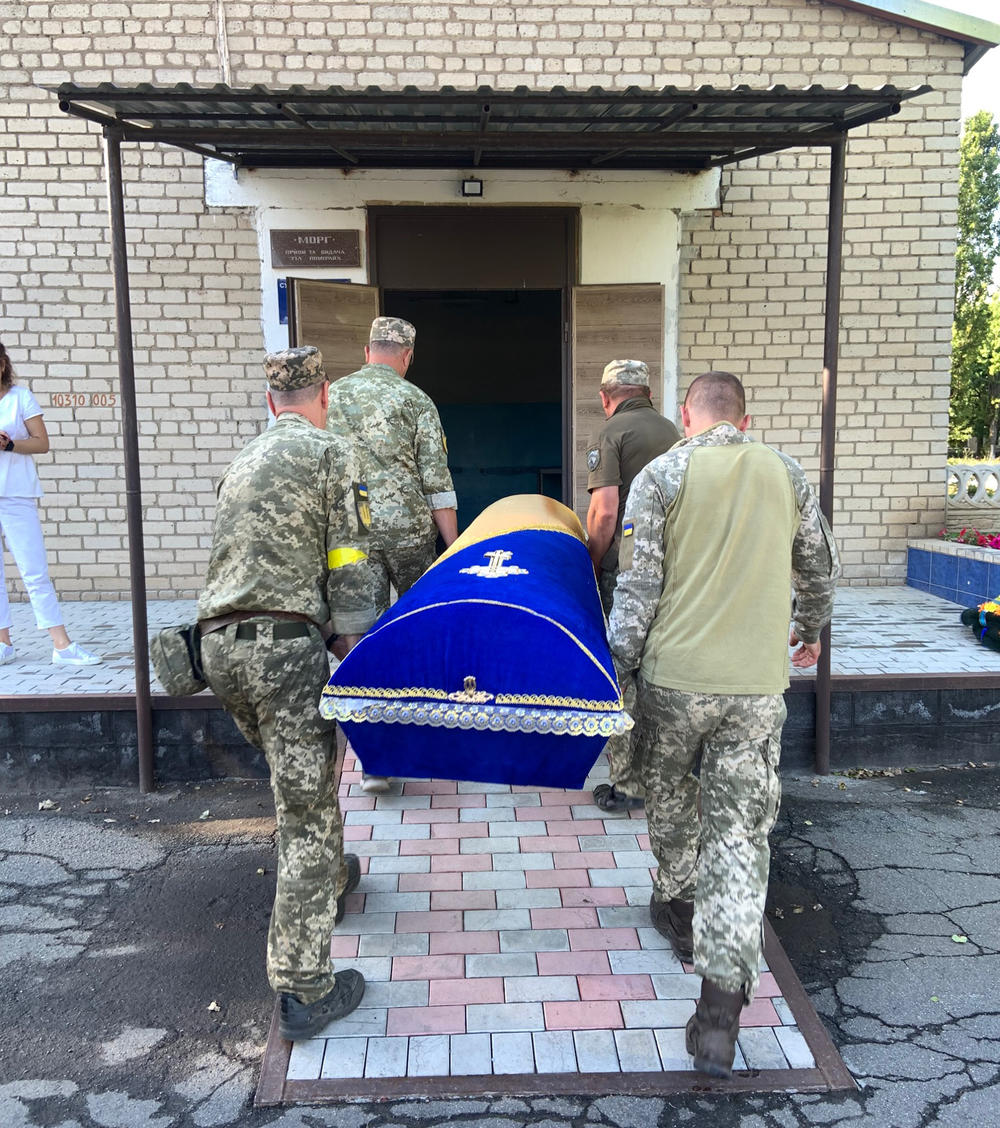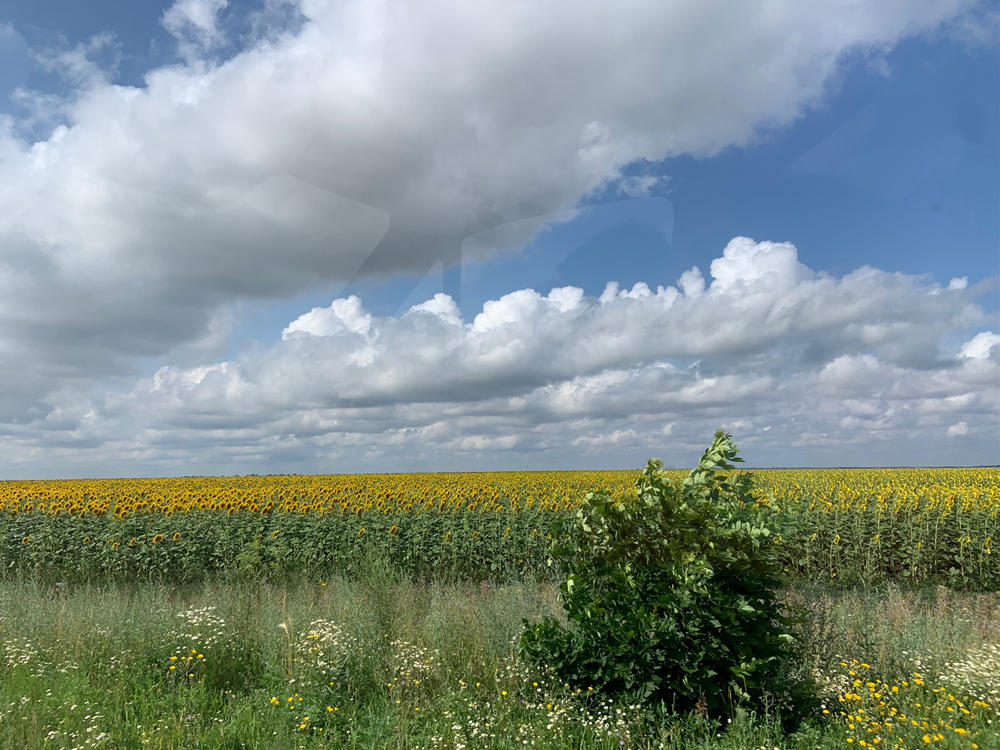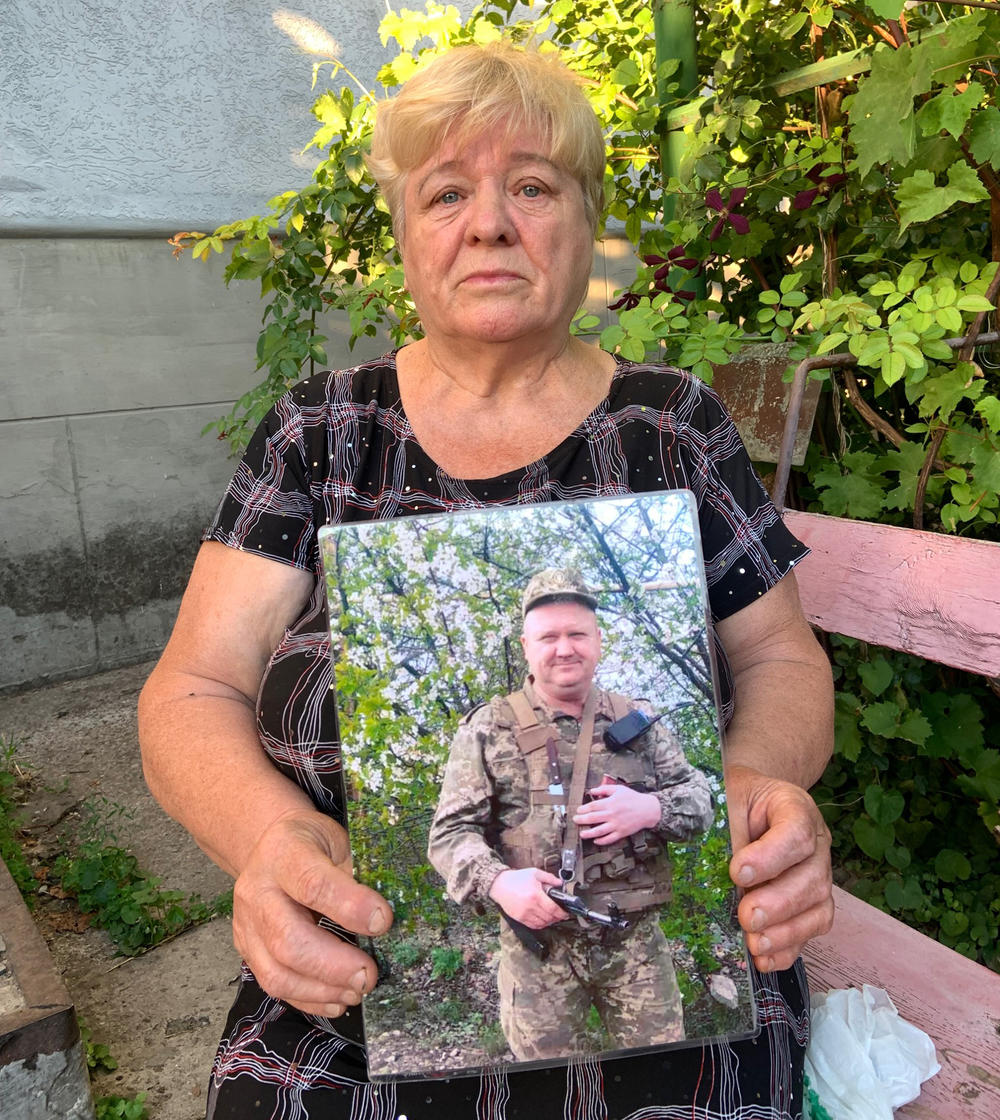Section Branding
Header Content
These Ukrainian volunteers recover soldiers' remains to return them to their families
Primary Content
DNIPRO, Ukraine — Outside a morgue in the central eastern Ukrainian city of Dnipro, a scene plays out all day, every day.
Coffin lids are brought out and leaned against a wall, along with large crosses and flowers. The coffins soon follow, the pale face of a dead soldier sometimes visible inside. They're slid inside a waiting van; the lids put on.
This is where Oleg Repnoy's journey begins. He's a volunteer for Evacuation 200, an organization that returns dead Ukrainian soldiers — or their remains — to their families.
"My job is to accompany these heroes on their last trip home," he says.
Since fighting began on Feb. 24, no one could keep up with the number of casualties, he says. So this special volunteer unit was created to help.
The former interior designer with the blue-eyed gaze has spent the past five months crisscrossing Ukraine with his precious cargo. The 55-year-old says he feels like he is helping in the fight.
"My work is important because I'm also taking care of all the bureaucracy and paperwork for families in grief and they are grateful," he says. "But you need to have strong mental health to do this job."
While President Volodymir Zelenskyy has said up to 200 soldiers a day could be losing their lives in the war with Russia, the exact number of Ukrainian casualties has been a preciously guarded government secret. Operations like this one give a glimpse into the true toll.
On the day NPR meets Repnoy, he's holding a soldier's paperwork. It has a number: 3,249. That's the number of dead since Feb. 24 in this morgue alone. This operation is playing out in morgues all over the country.
Repnoy is setting out for a small village several hours south of Dnipro, closer to the front lines. He's carrying two coffins with the remains of soldiers killed in early May, only recently recovered.
There's no air conditioning in the cab of the van. It's a hot day and he rolls down the window and smokes. He says sometimes he feels guilty bringing the young soldiers home.
"One day I drove the body of a very young guy born in 2002 and I thought, 'that young guy is dead and I'm much older than him and I'm alive.' It seems so unfair," he says.
But he says the families are never resentful, and always grateful to him when he arrives.
Out on the road, the vast Ukrainian plains stretch as far as the eye can see. There are shimmering wheat fields on one side, bright-yellow sunflowers on the other.
Repnoy listens to music and thinks about the soldiers he's carrying and the land he's crisscrossing. He says he's traveled extensively in his country and thought he knew it well.
"But when I started delivering dead soldiers, I began to think about how beautiful our country is," he says. "I just never imagined I'd discover my country going from morgue to morgue."
On the side of his white van — which was once used to deliver flowers — the number 200 is written in black. The name of this operation, Evacuation 200, is military jargon for the transport of dead soldiers.
The term made its way into public consciousness in the 1980s, when Ukraine was part of the Soviet Union and Soviet soldiers' bodies were brought home from the war in Afghanistan. Each body in its zinc coffin was said to weigh around 200 kilograms — about 440 pounds.
When Repnoy stops for gas, people know what cargo he's carrying. Olga Bereza, 44, looks over as she fills her tank. But she doesn't feel reverence for the dead, she says.
"Honestly?" she asks. "We feel only hate. When the war came into our home and our people are being killed, right now we can feel only hatred, unfortunately."
When Repnoy pulls into the village of Apostolove, members of the soldiers' regiment are waiting to meet the coffins. They slide them out of the van one by one, along with the flags and the flowers and the crosses, readying them for their upcoming funerals.
One of the dead soldiers is 47-year-old Andriy Bilay, who is from Apostolove. His 70-year-old mother, Vira Bilay, has been waiting for him.
She says the last time she spoke with Andriy was on May 7, when he told her he was going on a special operation. She pulls a large photo of her boy out of a plastic bag and cries as she talks about him.
"He worked for the railroad and everyone loved him," she says.
Bilay says her son was furious about the invasion and was on the front lines within days.
There were also foreign soldiers fighting for Ukraine stationed here in the village, says Bilay, and she took care of them.
"They didn't speak Ukrainian but I used Google Translate and I brought them food. Borsch, pancakes, homemade dumplings — I fed the foreign soldiers. But," she cries, "who took care of my son?"
Asked if she has a message for the world, she wails:
"People, please don't fight, it is heartbreaking. It's very painful. Don't kill each other!"
There's a World War II tank in her village, a monument bearing the inscription: "To the combatants of the Soviet army, liberators of the town of Apostolove, February 1944. From its grateful citizens."
Those citizens aren't grateful to the Russian army now, but there are no plans to take the monument down.
Copyright 2022 NPR. To see more, visit https://www.npr.org.
Bottom Content







